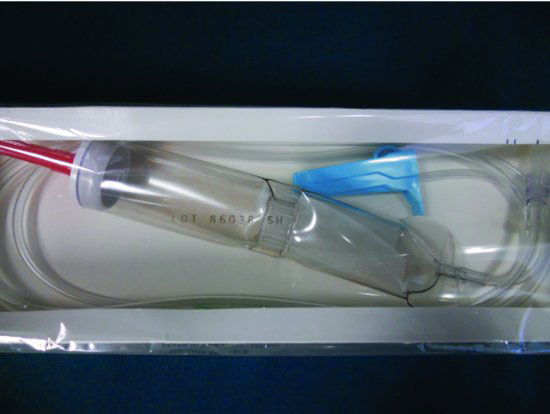The recipient should have a jugular intravenous catheter placed aseptically. The thawed plasma should be attached to a filtered administration set (Figure 74.2) and administration to the donor initiated. The transfusion should begin at a slow rate of 5 mL/kg/hour for the first 15 to 20 minutes and the recipient monitored for signs of transfusion reaction. After this time, if no abnormalities are noted, the rate may be increased to 10 mL/kg/hour for the remainder of the transfusion.
Figure 74.2 Filtered blood transfusion administration set. These should be used to prevent microscopic clots and fibrin from being transfused.

Practice Tip to Facilitate Procedure
In sick crias, it has been shown that 2 or more units of plasma may be needed to achieve IgG levels over 1,000 mg/dL (Gerspach et al., 2007).
Stay updated, free articles. Join our Telegram channel

Full access? Get Clinical Tree


